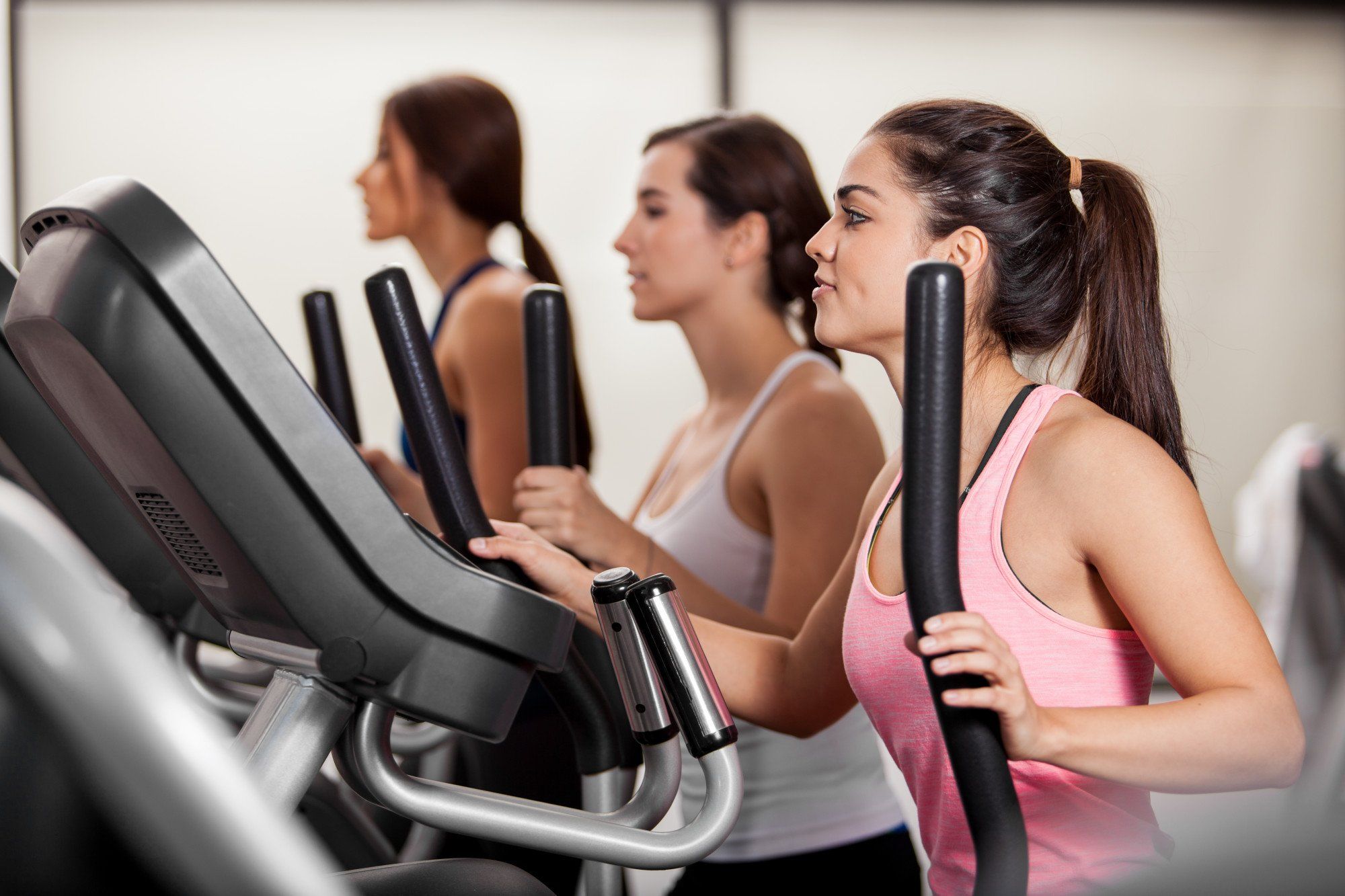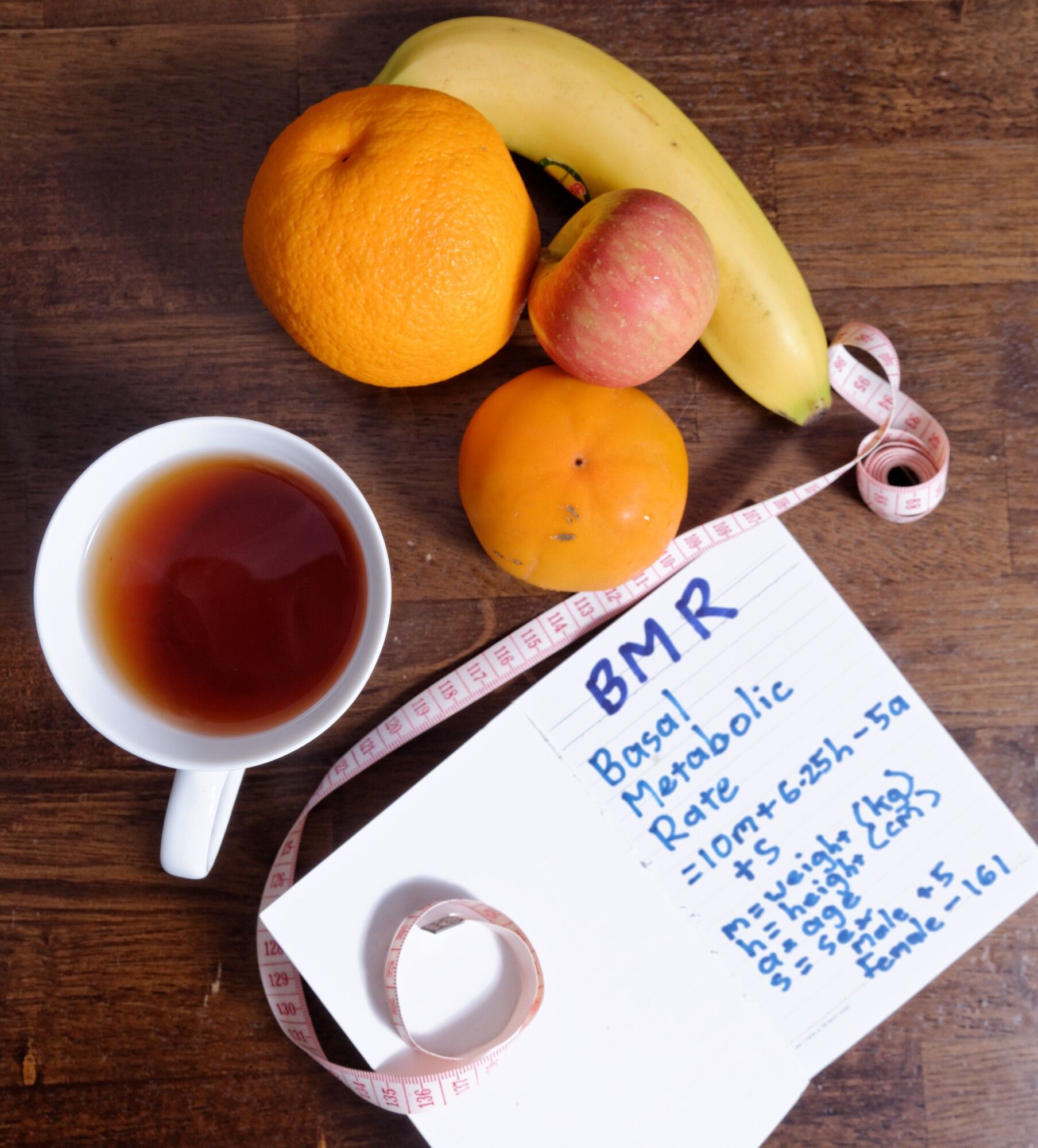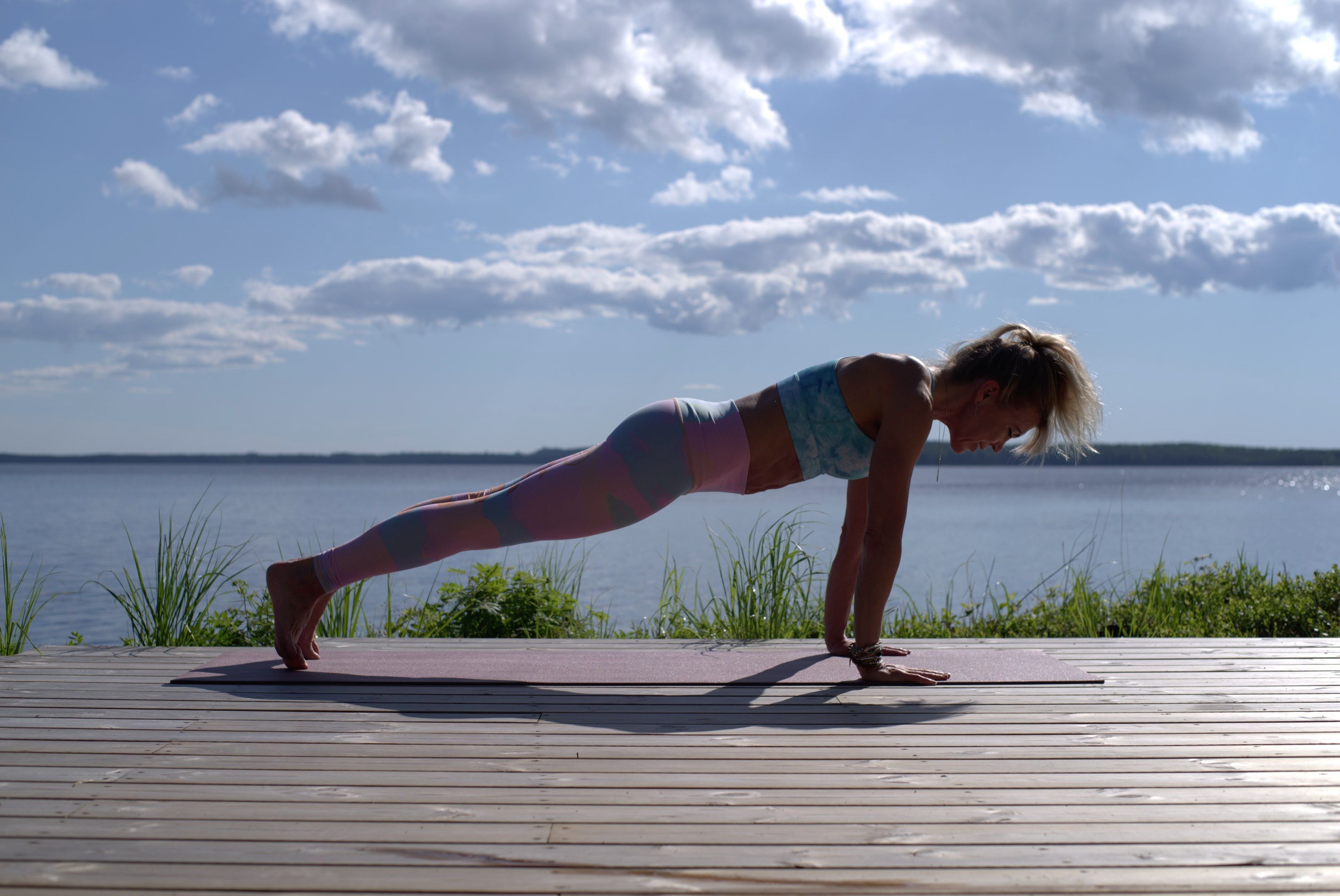If you are a fitness fiend who's interested in maxing out on their athletic capabilities or their client's, then you need to learn how to measure VO2 max.
Even though in the past measuring VO2 max used to be the realm of elite athletes and available only to a few, nowadays, many fitness centers and gyms are including it as part of their service package to clients.
Making high-end measurement devices such as VO2 max is the way humanity as a whole will progress in their fitness and athletic abilities as a whole.
Read on to see how to measure V02 max and why to measure it.
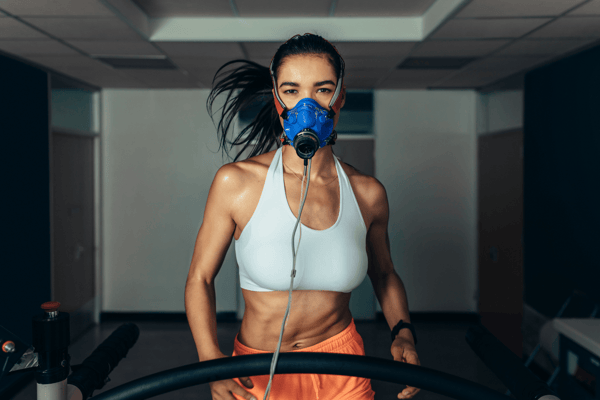
What Is VO2 Max?
There are two kinds of fitness that a person is capable of displaying — aerobic fitness and anaerobic fitness.
Aerobic fitness is related to endurance-style exercises, like running, swimming, and rowing. These are usually the more popular style of exercise in the gym or fitness center you go to.
Anaerobic fitness is related to the more intense but short bursts of exercises people undertake, like strength training or HIIT-style workouts.
What is VO2 max? VO2 max measures the aerobic capacity of a person's body, i.e., maximum rate of oxygen their body can absorb and use oxygen during an exercise period. This is also labeled their aerobic fitness.
If you are interested in increasing your aerobic fitness, you would need to know where you are starting from. This means testing out your VO2 max.
One thing to remember is that you shouldn't confuse your lactate threshold with your VO2 max levels. Your lactate threshold is where lactate builds up in your bloodstream faster than your body can rid it.
This usually happens at 50-80% of your VO2 max levels. You are familiar with that cramping or burning feeling you get after an intense workout.
What Does VO2 Max Indicate?
If you don't remember biology lessons from back in high school, let's refresh that here. Oxygen is obviously a crucial building block in any aerobic fitness routine. But what does VO2 max indicate?
When you breathe in oxygen during exercise, your cells (particularly mitochondria in the cells) take those oxygen molecules in and use them to create energy in the form of ATP (adenosine triphosphate).
These ATP molecules are what fuels your exercise and allow you to keep going for a long while to come. It's a complicated process, but your body performs it effortlessly every single time you go for a run or a swim.
The brilliant thing about VO2 max is that it gives you a number to gauge how effectively your body is taking in oxygen and producing ATP with it. It gives you an idea of how efficient your aerobic capacity is.
The higher your VO2 max, the greater your capacity to take in higher amounts of oxygen and create higher amounts of ATP. The more energy you have, you guessed it, the longer (more endurance) you can run or swim.
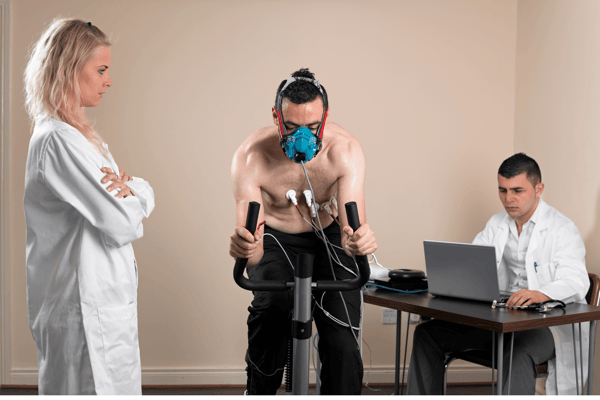
Why Measure VO2 Max?
The problem with traditional measuring tools, like heart rate or miles run, is that it doesn't give you an idea of how efficient your body is getting due to your workouts.
You might be doing more miles, or your heart rate might be lower, but does that really mean that you are getting fitter? Not really.
You can't tell your fitness levels with most measuring tools, except VO2 max.
Then why doesn't everyone get their VO2 max levels measured instantly? Well, that's where the crux of the problem lies.
It's a great number to know especially if you have far-reaching fitness goals to achieve. But due to the complicated manner in which VO2 max is measured, its availability is quite limited.
Also, once you have your VO2 max levels, you know your baseline, and you know where you need to get to, especially if you are comparing yourself to the elite in your field, who probably have themselves tested regularly.
How To Measure VO2 Max?
Even though nowadays there are watches that claim to measure your VO2 max, the validity of their claims is in question.
The primary way VO2 max is measured (and the original way) is by hooking yourself up to a mask and a heart rate monitor while running on a treadmill or riding a bike.
The mask is connected to a device that measures the volume of oxygen you inhale and the amount of air you exhale. The technician would slowly increase the exercise intensity of the treadmill or the bike.
This would be done until your oxygen consumption levels off, despite the increase in intensity.
This is the plateau. You reach it because there isn't enough oxygen to fuel your workouts anymore, and your body moves from aerobic metabolism (as outlined above) to anaerobic metabolism.
If Your Fitness Level Is Lower, You Can Still Get Your VO2 Max Levels
You might be wondering if you could get your VO2 max levels tested if you are not extremely fit or even obese or overweight. It's definitely a possibility.
If your fitness levels are lower, you can do a simple walk/run test on the treadmill instead of going at your max and puking your guts out after (which happens to many participants).
You can also do the Cooper 1.5 mile walk/run test, which is a simple running test to measure aerobic fitness. You need to run 1.5 miles in the shortest possible time, which means you are going at your max.
The total time you take to complete the walk/run is recorded in minutes. And then VO2 max is calculated using the equation below. VO2 max will be in mL/kg/min.
VO2max = (483 / time) + 3.5
It's not going to be as accurate as hooking yourself up to a mask and a treadmill and getting yourself tested in that manner. But it's better than nothing.
This is also a great tool to use if you don't have access to a gym or lab that does VO2 max testing.
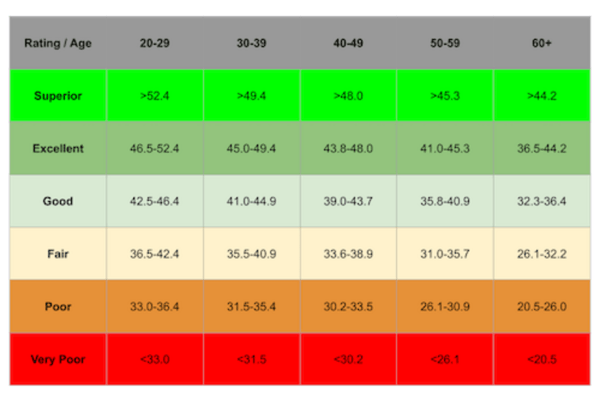
What Should Your VO2 Max Levels Be At?
As with everything fitness-related, there isn't a clear answer to this question. Age, gender, and even altitude can affect fitness levels drastically and thus VO2 max levels.
Let's look at some averages and elite numbers, though:
- The average VO2 max for sedentary males is 35-40 mL/kg/min
- The average VO2 max for sedentary females is 27-30 mL/kg/min
- Elite male runners show VO2 max of up to 85 mL/kg/min
- Elite female runners show VO2 max of up to 77 mL/kg/min
- The highest reported VO2 max is by a young cyclist from Norway at 97.5 mL/kg/min
The numbers vary widely depending on what your fitness levels are and also on the circumstances in which the VO2 max was measured.
You CAN Increase Your VO2 Max Levels Through Training
The awesome thing about VO2 max levels is that they can absolutely be changed and upgraded through training.
You aren't stuck with a particular number for life, even though genetics do play a major role in what number is.
Once you get your VO2 max levels checked out at a fitness center, gym, or sports performance lab, there are specific things you can do to improve your VO2 max.
As you can imagine, the best exercise to improve your VO2 max levels is high-intensity interval training. Not surprising, right?
Run at an intense pace (at a running pace where you can reach VO2 max) for 3-4 minutes and then rest for 2-3 minutes. Repeat. Or you can run uphill hard for 2 minutes and then jog back down. Repeat.
These workouts are meant to be intense, if you need to build up to them, that's definitely okay.
Also, if running isn't your thing, then you can use any exercise that you do in an intense interval training style workout. Swimming, or rowing, or biking all could be used to improve your VO2 max levels.
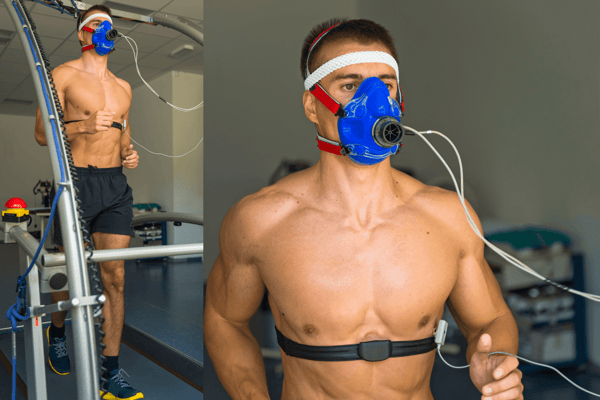
Testing VO2 Max Levels Is Where the Future of Fitness Lies
It's hard to distinguish oneself in the fitness or training realm, especially since there is so much competition and there are just so many youngsters coming up with immense genetic luck and talent.
To compete in such an environment, you need the best tools, the best training regimens, and the best know-how. That's why you need to know how to measure VO2 max levels in today's world.
It's not about competing with the small guys anymore. It's about going elite and about getting serious.
Are you interested in staying on top of the latest wellness and fitness technology trends? Check out the new gold standard in health assessments at Styku.


